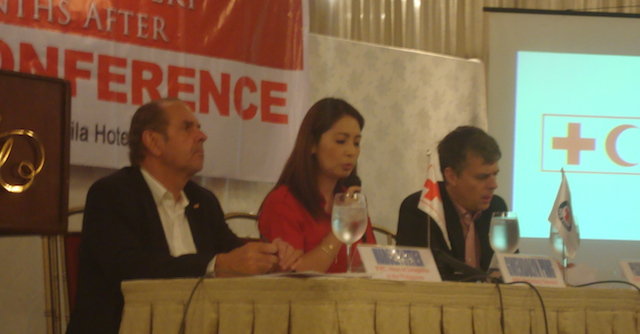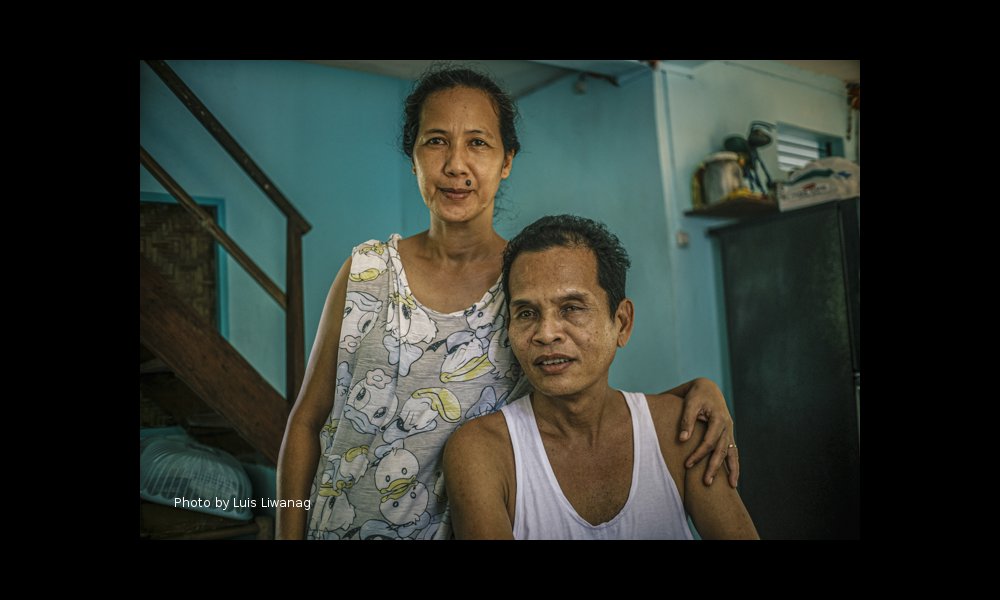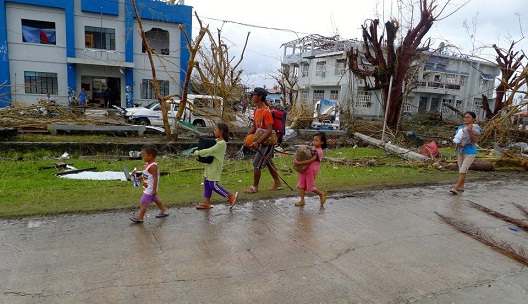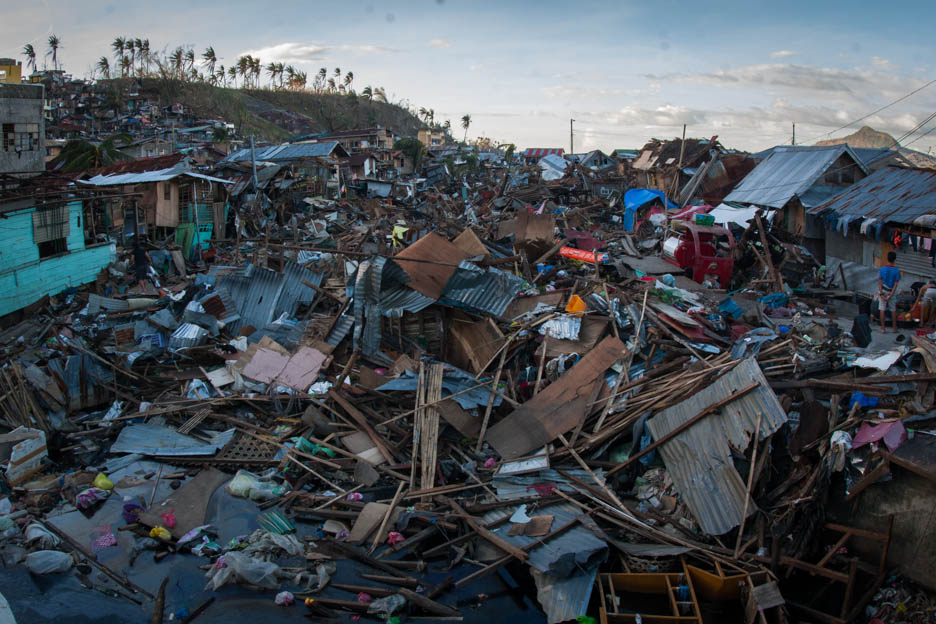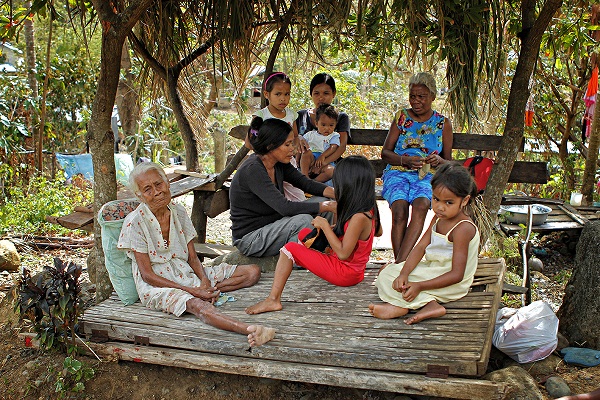By KIERSNERR GERWIN TACADENA
AFTER typhoon Yolanda struck the Philippines last November, Jimmy Gagarino found himself, his wife and nine children living under a makeshift shelter with a tarpaulin for a roof.
Gagarino, a fisherman from Eastern Samar, is one of 16 million people whose houses were destroyed by Typhoon Yolanda. Known internationally as Haiyan, the typhoon damaged 1.14 million houses in the Visayas region, the Philippine Red Cross (PRC) said.
“My house is now just an empty square with no roof and walls,” Gagarino said. “We cannot live like this for too long as there could be another storm.”
Gagarino’s woes may soon be over, with the PRC planning to build 6,000 “storm-resilient” shelters for typhoon victims by the end of 2014.
In a press conference as part of Red Cross Day last Monday, PRC Secretary General Gwendolyn Pang said the project is the main focus of Red Cross’ three-year recovery road map in helping rehabilitate the typhoon-ravaged parts in the Visayas.
She added the project will be done in cooperation with International Committee of the Red Cross (ICRC) and International Federation of Red Cross (IFRC).
These shelters will be modeled after the houses it provided victims of Typhoon Pablo when it struck Eastern Mindanaoin November 2013. Based on PRC’s assessment, the design makes the shelters easy to maintain and to extend with additional rooms.
Gagarino’s family and his neighbors from the town of Giporlos in Eastern Samar will be the first to benefit from these housing projects.
Pang said the storm-resilient homes are designed to last 15 years and are on-site shelters made from cement blocks and iron columns with coconut lumber frame and corrugated iron roof.
PRC received international donations amounting to 320 million Swiss francs for the three-year recovery plan.
“This was collected globally by the whole Red Cross and Red Crescent Movement from different states, corporate partners and individual donors,” Pang said.
She said the PRC’s target by the end of the recovery plan in 2016 is to build 40,000 core shelters in the 10 areas worst hit by Typhoon Yolanda: Antique, Aklan, Iloilo Capiz, Coron, Cebu, Eastern and Western Samar, Ormoc and Leyte.
“For shelters, we are very proud to say that we have contributed, as a single organization, 25 percent of the emergency shelter efforts,” she said.
Aside from building houses from the ground up, the PRC also helped by distributing corrugated iron roofing sheets to the 50,000 homes that needed repair.
PRC, through the help of the members of the community in affected areas, scouts for danger zones and high-risk areas before building rehabilitation houses. “We are not just looking at building, but we make sure we build houses of quality,” Pang said.
PRC also provides relocation to those who prefer it. Two relocation sites are situated in Cebu. “There is land already [in Cebu]. We have seen the land given to Red Cross but it requires a lot of development work,” Pang said.
IFRC’s Marcel Fortier said 20 percent of the donated fund was already spent during the emergency phase that started from November to April of 2013.
In that time, PRC delivered 160,000 liters of clean drinking water to 70,000 beneficiaries in Samar. Food rations and vegetable seeds were distributed to 43,132 households in 12 municipalities in Visayas.
“We need to still raise roughly about 40 to 50 million Swiss francs for us to be able to deliver the targets,” Pang said.
PRC has also started, for the very first time, giving cash grants to the affected families.
The cash grants come the form of either unconditional cash transfers, cash grants for livelihood or shelter repair.
“For the unconditional cash transfer program, the total amount that we have already given is nearly about P300 million for 90,000 households,” she said. This cash grant is in lieu of relief goods that Red Cross distributes.
For livelihood cash grants, beneficiaries are given 10 millions pesos in two tranches. Cash for shelter repairs are also given aside from in-kind repair materials like tarpaulins, corrugated roof and timber.
The PRC said the international fund will enhance their capacity to “respond to future disasters through targeted skills training for volunteers and strengthening expertise in disaster management and disaster risk reduction.”
(The author is a University of the Philippines student writing for VERA Files as part of his internship.)
